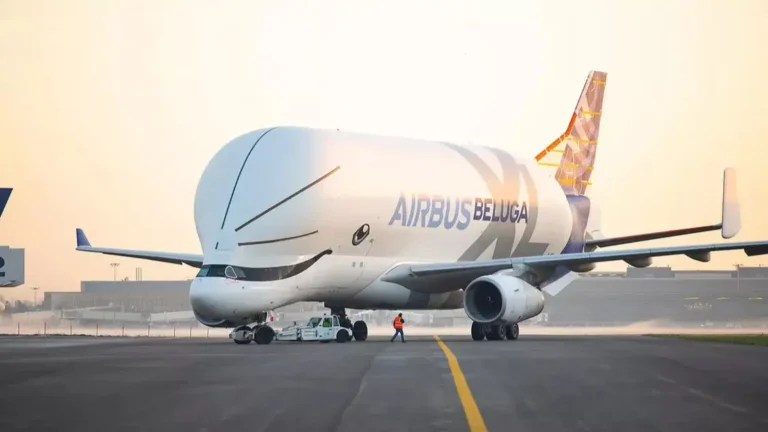TOULOUSE- After serving as the program’s test platform since 2018, the last of the six Airbus BelugaXLs entered service in June 2024. These successors to the A300-600ST, the original ‘Beluga’, continue to enhance the company’s industrial capabilities.
In June 2024, the final BelugaXL (BXL) joined its five counterparts at Airbus Transport International (ATI) after serving as a test aircraft. ATI, an Airbus subsidiary, has operated as the company’s internal airline since 1996.
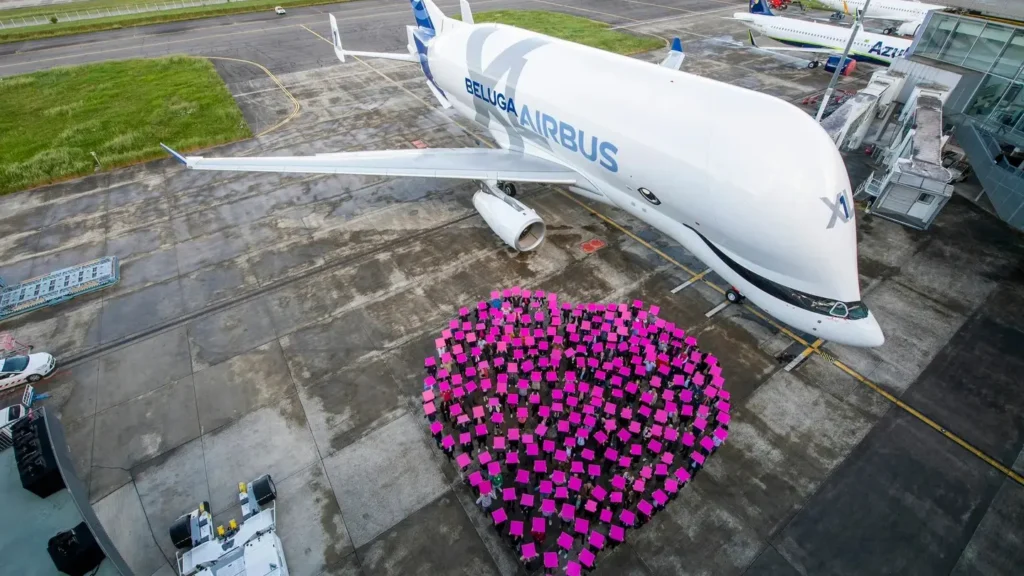
Airbus Delivers Last BelugaXL
The BXL offers 30% more payload capacity than its predecessor, the A300-600ST, and plays a crucial role in Airbus’ increasing production rates.
These six specially designed airlifters, built in Toulouse, France, transport sub-assemblies and components between Airbus’ manufacturing sites across Europe. Each mission averages a turnaround time of just 70 minutes, facilitated by custom loading facilities at plants in France, Germany, Spain, and the UK.
The final handover to ATI marks the completion of the BelugaXL program, which began in 2014. The development team was centralized, bringing together around 1,000 Airbus engineers and suppliers to streamline decision-making and simplify processes. Parts, equipment, and design principles were reused and adapted from other Airbus platforms whenever possible. This approach helped the BelugaXL progress from concept to its first flight in just five years.
“We created the BelugaXL, but also what we called the BXL spirit – making the impossible possible,” says Bertrand George, who led the plane’s development.
Despite each of the six aircraft being certified and delivered on time, launching the BXL program was a significant challenge.
“Our instructions were to halve the BXL’s original development cost and deliver the first aircraft, certified as a normal A330ceo, within five years,” recalls Bertrand. “Fortunately, we had carte blanche to explore novel approaches to make it happen. Those experiences will benefit future programs across all of Airbus’ businesses.”
Reflecting on the first flight, Bertrand remembers the emotion vividly. “What was a truck in the morning became an aircraft by the afternoon,” he says.
You see the work of thousands of people and thousands of hours taking flight before your eyes.”
Bertrand George, Airbus BelugaXL Developement head
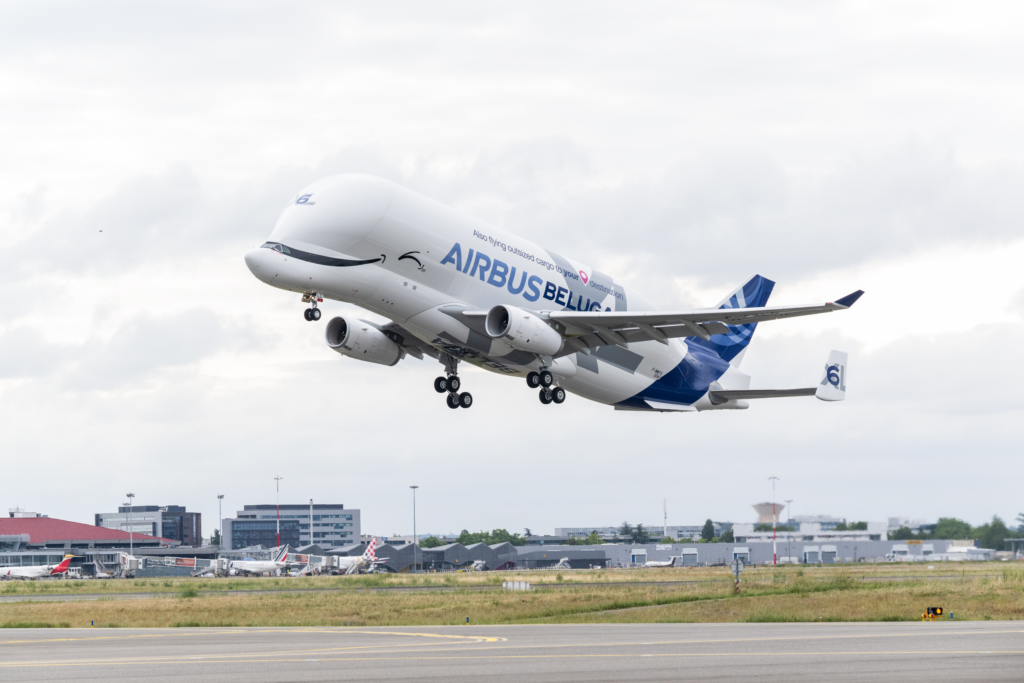
800 Test flight hours
As is customary for the first airframe off the assembly line, BXL#1 did not enter service right away. Following its maiden flight, it served as the program’s test platform until 2023. Over four years, the giant airlifter completed over 800 flight test hours, during which pilots assessed how the BXL handled the operating conditions it would face while traveling between 11 European destinations.
Now, after a well-deserved rest and major refurbishment, BXL#1 is ready to join the fleet. The additional capacity is timely, as every Airbus commercial aircraft program is ramping up production through 2024.
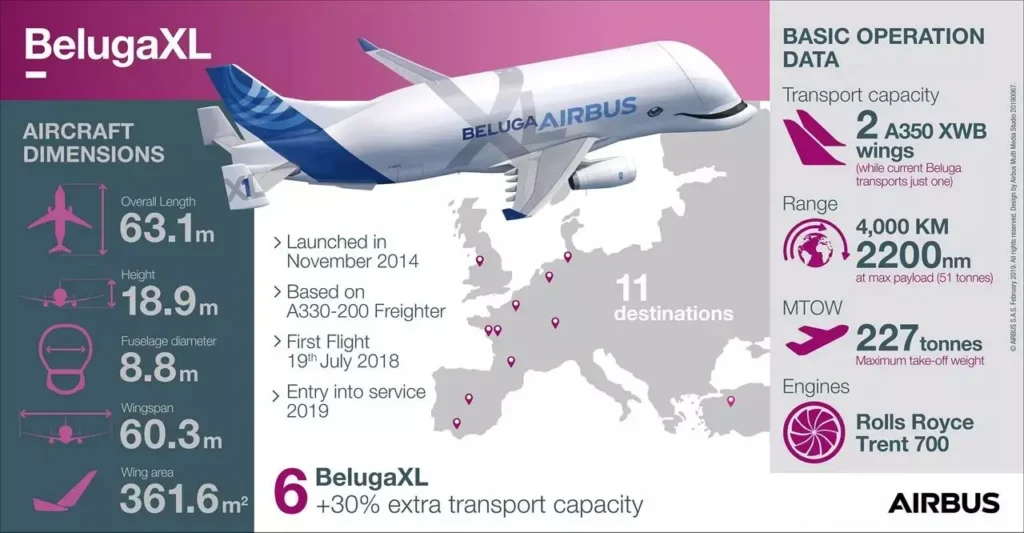
Runs on SAF
Based on the A330-200 freighter, each BelugaXL has a payload capacity of 51 tonnes and a range of 2,200 nautical miles. The aircraft is as long as two blue whales and as tall as a three-story office building. Its hold can accommodate 26 small cars or seven elephants.
Crucially, the airlifter can carry the largest A350 fuselage section or two of the widebody’s 30-meter-long wings, whereas its predecessor could only carry one.
ATI’s BelugaXL fleet is projected to reach 9,500 flight hours annually by 2027, compared to the planned 6,500 flight hours in 2024. Additionally, like its predecessor, the BelugaXL can operate with a blend of sustainable aviation fuel (SAF), supporting Airbus’ goal of increasing SAF use in its internal air operations.
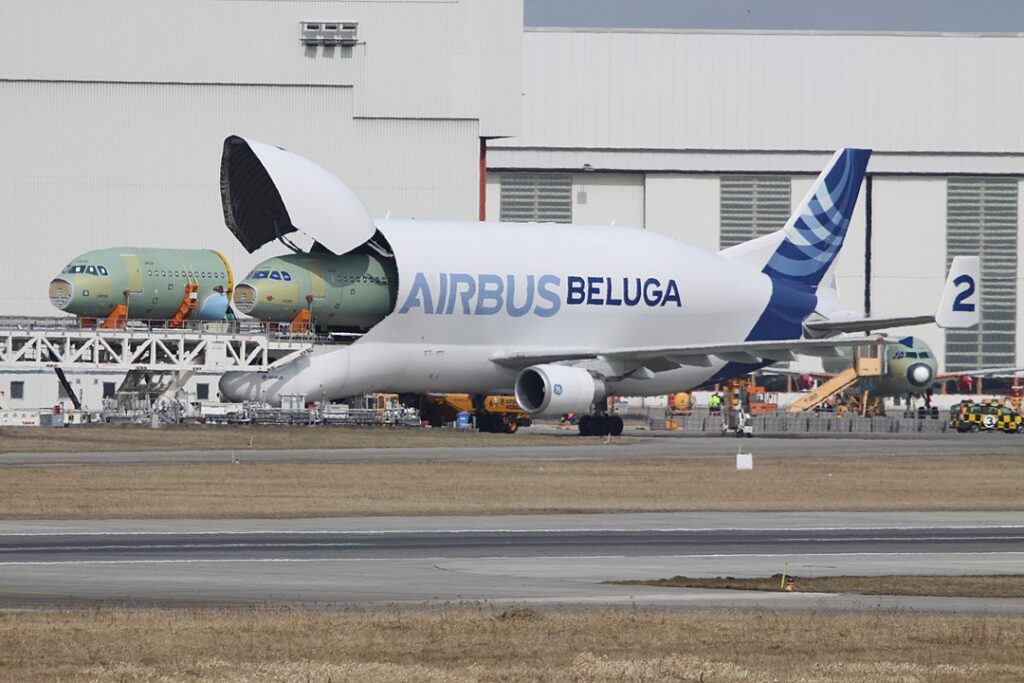
In 2023, SAF accounted for over half of ATI’s fuel consumption. The sustainable fuel is available across almost all of the BelugaXL’s European network. By 2030, the entire fleet’s flight operations will be conducted with SAF, in line with Airbus’ sustainability roadmap.
The BelugaXL’s greater capacity also means fewer flights are required compared to its predecessor. In 2024, the six aircraft combined are expected to transport around five percent more payload compared to 2019’s mixed BXL and Beluga ST fleet.
ATI projects a 20% reduction in carbon emissions in 2024 compared to 2019.
ATI plans to operate the BelugaXL for thirty years. The program’s production infrastructure, including gigantic jigs and tooling, is being decommissioned and stored for potential future use.
With the last aircraft now part of the fleet, proving the BelugaXL’s capabilities, one thing is certain: it’s ready for a whale of a time.
Join us on Telegram Group for the Latest Aviation Updates. Subsequently, follow us on Google News.

